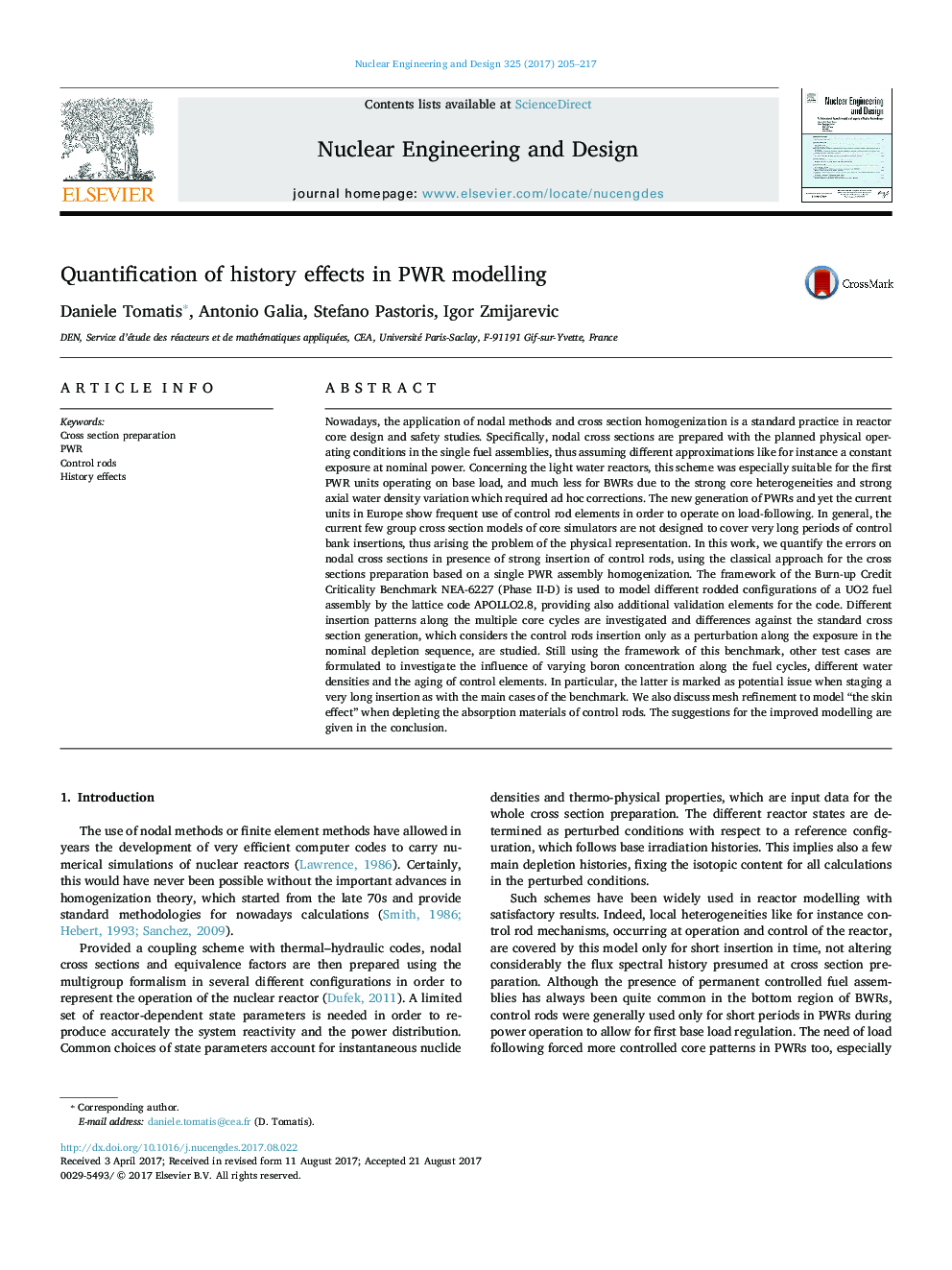| کد مقاله | کد نشریه | سال انتشار | مقاله انگلیسی | نسخه تمام متن |
|---|---|---|---|---|
| 6759648 | 1431396 | 2017 | 13 صفحه PDF | دانلود رایگان |
عنوان انگلیسی مقاله ISI
Quantification of history effects in PWR modelling
دانلود مقاله + سفارش ترجمه
دانلود مقاله ISI انگلیسی
رایگان برای ایرانیان
موضوعات مرتبط
مهندسی و علوم پایه
مهندسی انرژی
مهندسی انرژی و فناوری های برق
پیش نمایش صفحه اول مقاله

چکیده انگلیسی
Nowadays, the application of nodal methods and cross section homogenization is a standard practice in reactor core design and safety studies. Specifically, nodal cross sections are prepared with the planned physical operating conditions in the single fuel assemblies, thus assuming different approximations like for instance a constant exposure at nominal power. Concerning the light water reactors, this scheme was especially suitable for the first PWR units operating on base load, and much less for BWRs due to the strong core heterogeneities and strong axial water density variation which required ad hoc corrections. The new generation of PWRs and yet the current units in Europe show frequent use of control rod elements in order to operate on load-following. In general, the current few group cross section models of core simulators are not designed to cover very long periods of control bank insertions, thus arising the problem of the physical representation. In this work, we quantify the errors on nodal cross sections in presence of strong insertion of control rods, using the classical approach for the cross sections preparation based on a single PWR assembly homogenization. The framework of the Burn-up Credit Criticality Benchmark NEA-6227 (Phase II-D) is used to model different rodded configurations of a UO2 fuel assembly by the lattice code APOLLO2.8, providing also additional validation elements for the code. Different insertion patterns along the multiple core cycles are investigated and differences against the standard cross section generation, which considers the control rods insertion only as a perturbation along the exposure in the nominal depletion sequence, are studied. Still using the framework of this benchmark, other test cases are formulated to investigate the influence of varying boron concentration along the fuel cycles, different water densities and the aging of control elements. In particular, the latter is marked as potential issue when staging a very long insertion as with the main cases of the benchmark. We also discuss mesh refinement to model “the skin effect” when depleting the absorption materials of control rods. The suggestions for the improved modelling are given in the conclusion.
ناشر
Database: Elsevier - ScienceDirect (ساینس دایرکت)
Journal: Nuclear Engineering and Design - Volume 325, 15 December 2017, Pages 205-217
Journal: Nuclear Engineering and Design - Volume 325, 15 December 2017, Pages 205-217
نویسندگان
Daniele Tomatis, Antonio Galia, Stefano Pastoris, Igor Zmijarevic,